In the heart of Florence, a city that symbolizes the Renaissance, lies one of the most famous squares in Italy: Piazza della Signoria.
Located between Florence Cathedral and the Arno River, this square is not only a meeting point for tourists and Florentines, but a true open-air museum, witness to the history, art and politics of one of the most influential cities in Europe over the centuries. In this article, we will explore its history, the monuments that adorn it, how to visit it and the role it continues to play in the cultural life of Florence.
Explore Florence with Florence Pass
The history of Piazza della Signoria
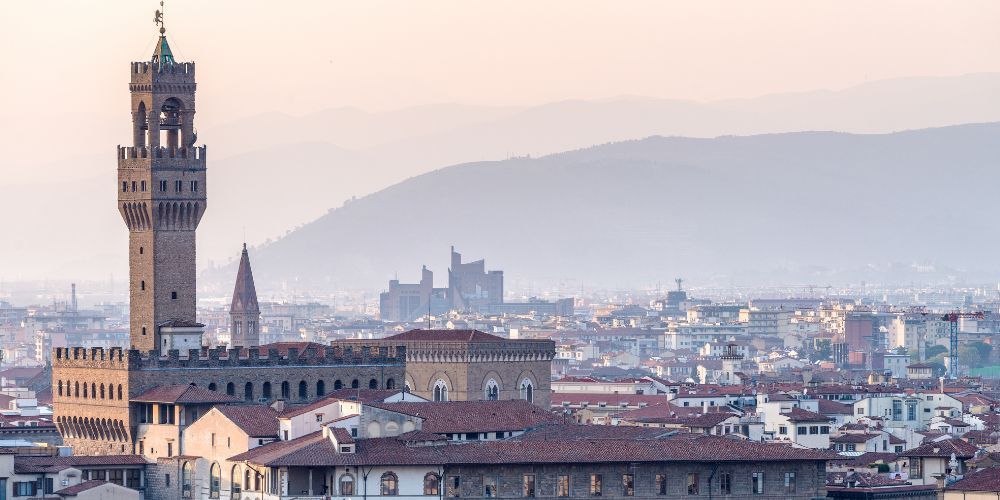
Piazza della Signoria has very ancient origins, with roots in the Roman era. In the imperial age, in the area now occupied by the square, there was a theater and perhaps some civic buildings. However, it was only in the Middle Ages that this area began to take on the configuration we know today.
In the 13th century, with the political and economic growth of the city, it became necessary to build a center of civil power, independent from the religious one represented by the Cathedral. Thus, in 1299, construction began on the Palazzo della Signoria, today known as Palazzo Vecchio, intended to house the city government, the Signoria.
To make room for the new square, several houses and towers of Ghibelline families, enemies of the Guelph faction in power, were demolished. Piazza della Signoria thus became the symbol of the political victory and civic rebirth of the city.
During the Renaissance, the square was further transformed, becoming one of the most important centers of cultural and artistic life in Florence. Public assemblies, capital executions – such as that of the friar Girolamo Savonarola in 1498 – and religious and civil celebrations were held there. The square gradually assumed the role of a “stage” for the Medici power, who knew how to enrich it with works of art intended to glorify the power of the family.
Monuments of Pizza della Signoria: Palazzo Vecchio
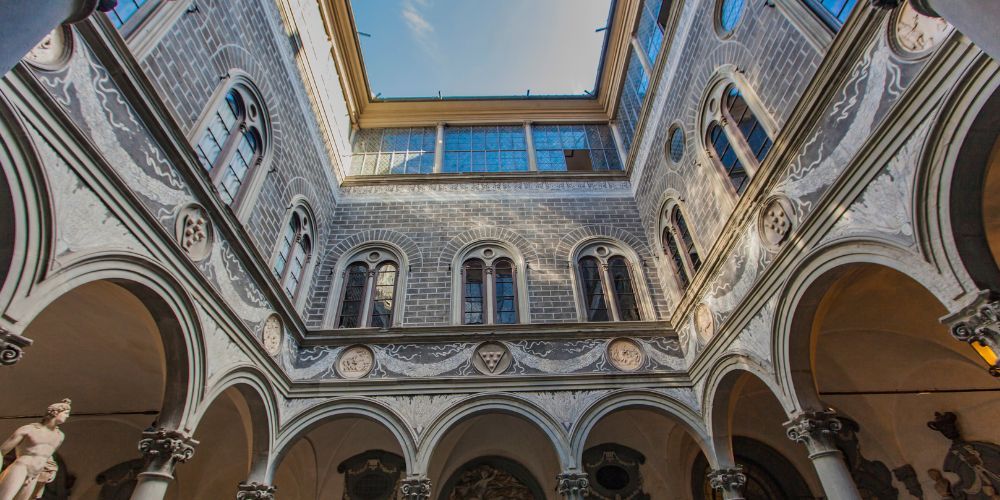
The undisputed symbol of the square is Palazzo Vecchio, with its 94-meter-high tower, called Torre di Arnolfo. The construction, begun in 1299 based on a design by Arnolfo di Cambio, was intended as the seat of the Signoria. Over time, it became the ducal residence under Cosimo I de’ Medici and the seat of city power to this day, currently hosting the Municipality of Florence. The palace can be visited and houses rooms frescoed by Giorgio Vasari, as well as works by Michelangelo, Donatello and other great artists.
Skip the line to visit Palazzo Vecchio!Loggia dei Lanzi
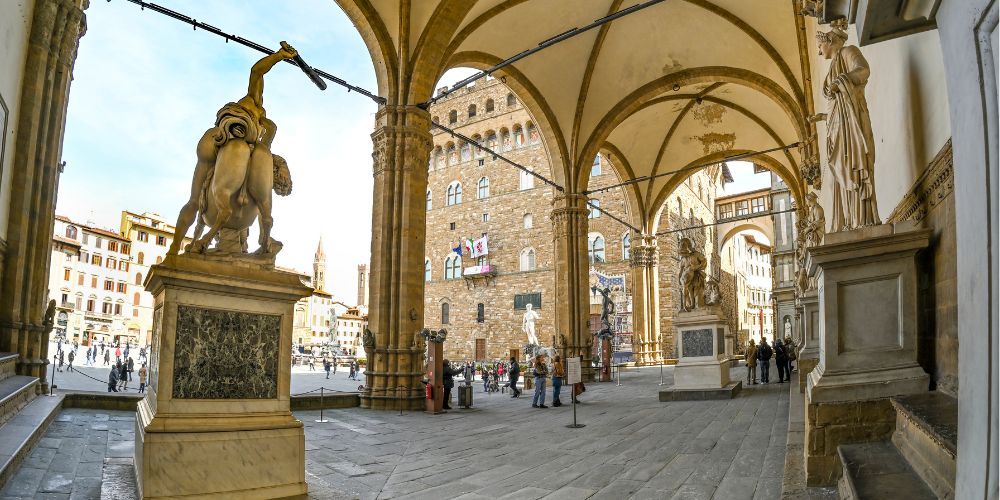
Next to the palace is the Loggia dei Lanzi, an elegant open structure from the 14th century, designed by Orcagna and originally intended for public ceremonies. Over time it has become a true open-air gallery of Renaissance and Baroque sculptures. Among the most famous works are:
- Perseus with the Head of Medusa by Benvenuto Cellini
- The Rape of the Sabine Women by Giambologna
- Hercules and the Centaur Nessus, also by Giambologna
These statues celebrate strength, courage and heroism, themes dear to Medici propaganda.
Equestrian statue of Cosimo I
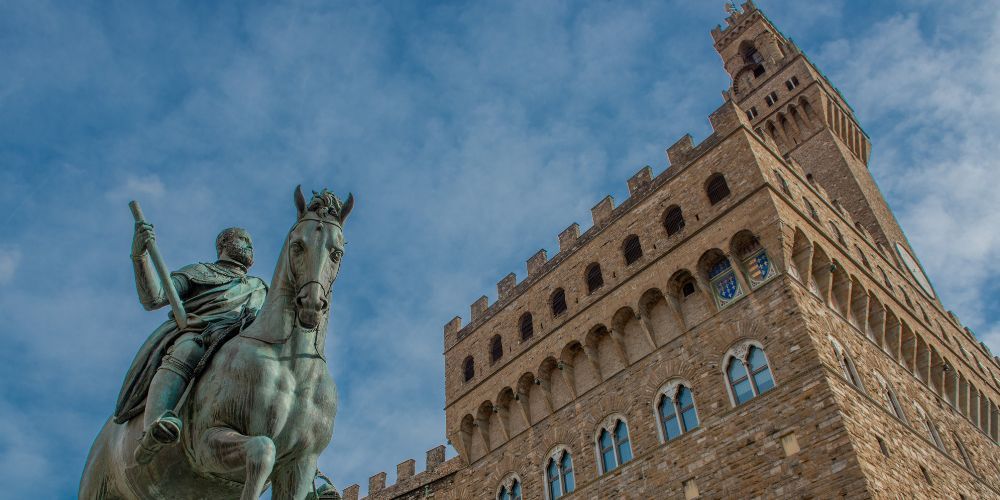
In front of Palazzo Vecchio stands the monumental equestrian statue of Cosimo I de’ Medici, created by Giambologna in 1594. It is one of the first modern equestrian statues made of bronze, and symbolizes the absolute power of the Grand Duke.
Fountain of Neptune
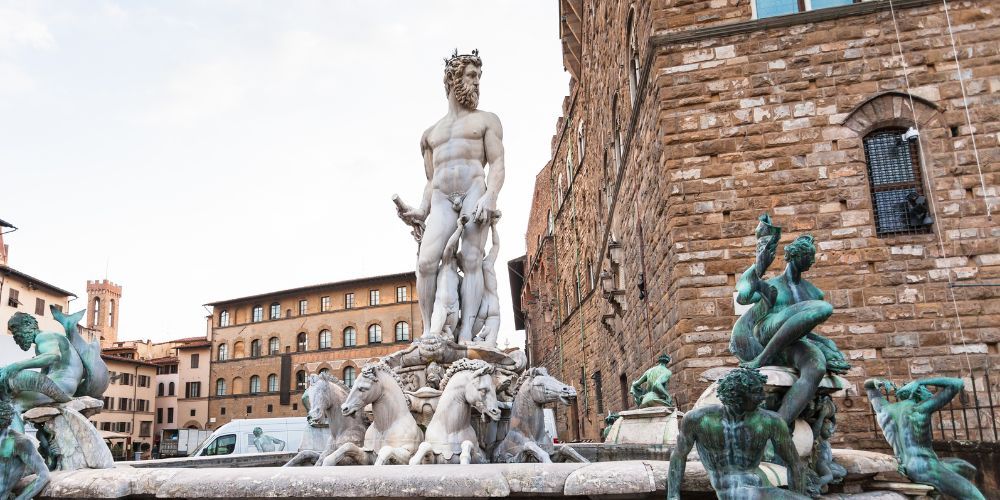
Next to the equestrian statue is the Fountain of Neptune, a work by Bartolomeo Ammannati, commissioned by Cosimo I to celebrate the naval victories of the Medici. The figure of the sea god, sculpted in white marble, stands on a base adorned with bronze nymphs and tritons. Although it was not well received at the time, today it is one of the most iconic elements of the square.
Copy of Michelangelo's David
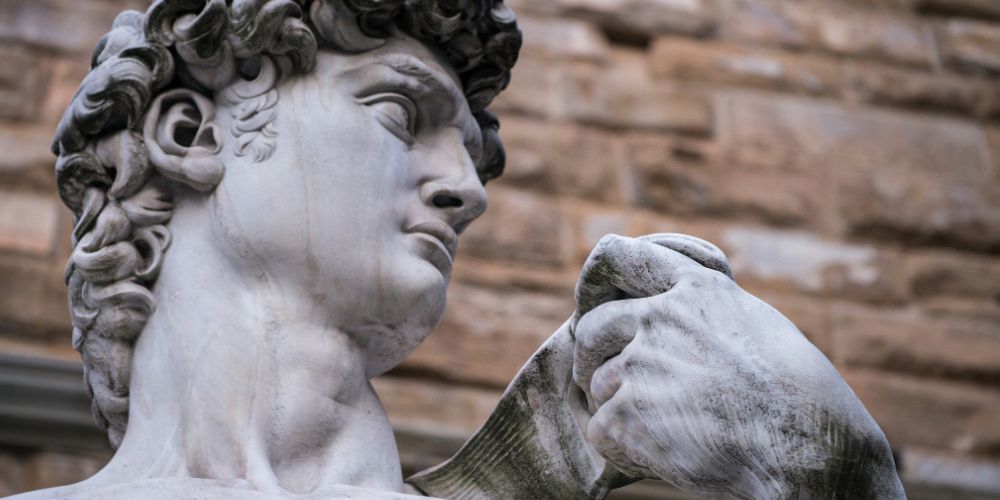
At the entrance to Palazzo Vecchio is a copy of Michelangelo’s David, placed there in 1910 to protect the original, now preserved in the Galleria dell’Accademia. David represents the ideal of the Renaissance man, a symbol of strength and civic virtue.
Visiting Piazza della Signoria
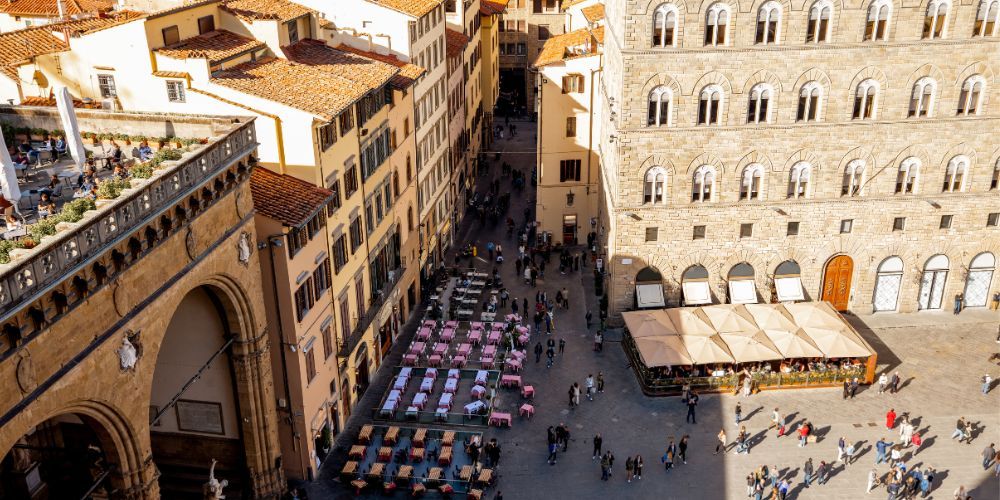
Visiting Piazza della Signoria is an immersive experience that can be enjoyed in various ways, depending on the time and the visitor's interest.
The square is freely accessible 24 hours a day. As it is a public square, it is also possible to visit it at night, when the lighting creates a suggestive and less crowded atmosphere.
The main monuments can be visited according to specific times:
- Palazzo Vecchio is open every day, with times that vary seasonally. The visit includes the internal rooms, the Salone dei Cinquecento and the climb to the tower.
- Loggia dei Lanzi can be visited for free, being an open space.
- Palazzo Vecchio Museum offers guided tours, activities for families and a multimedia tour.
Guided tours are available in Italian and English that combine a visit to the square with a visit to the Uffizi, the Duomo or the Vasari Corridor. Some tours also include dramatized experiences or stories about the life of the Medici.
There are several historic cafes and restaurants around the square where you can take a break and enjoy the view of the art. However, as it is a tourist area, prices can be high: it is worth exploring the side streets for more authentic options.
Enjoy the city of Florence by skipping the queuesPiazza della Signoria today: culture, tourism and events
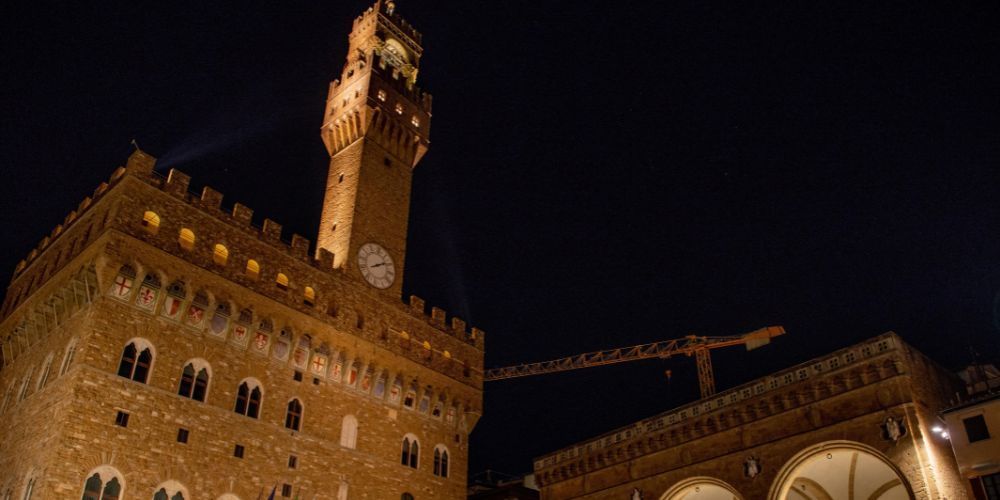
Today, Piazza della Signoria is one of the main cultural and tourist centers of Florence. Despite the high influx of visitors, it has managed to maintain a strong and authentic identity.
Throughout the year, the square hosts numerous cultural events and public celebrations, such as:
- Calcio Storico Fiorentino: even if the match takes place in Piazza Santa Croce, the parade often starts from Piazza della Signoria.
- Concerts and shows: occasionally classical or modern music concerts are held there.
- Institutional celebrations: such as the Festa della Toscana, which commemorates the abolition of the death penalty in the Grand Duchy.
The square continues to be a place of living art. The statues and buildings are constantly being restored and studied. Recent technologies, such as augmented reality apps, allow you to explore the square with historical and artistic information in real time.
In recent years, efforts have been made to promote more sustainable and conscious tourism, through less-traveled cultural itineraries and collaborations with schools and universities. Piazza della Signoria is an integral part of these routes, as it is the ideal starting point for discovering Florentine heritage.
Finally, the square is also a place of collective memory. A bronze plaque commemorates the burning of Savonarola, and civic demonstrations still find a point of reference in this space today. It is a lively square, crossed every day by thousands of people
Piazza della Signoria: an eternal symbol of Florence
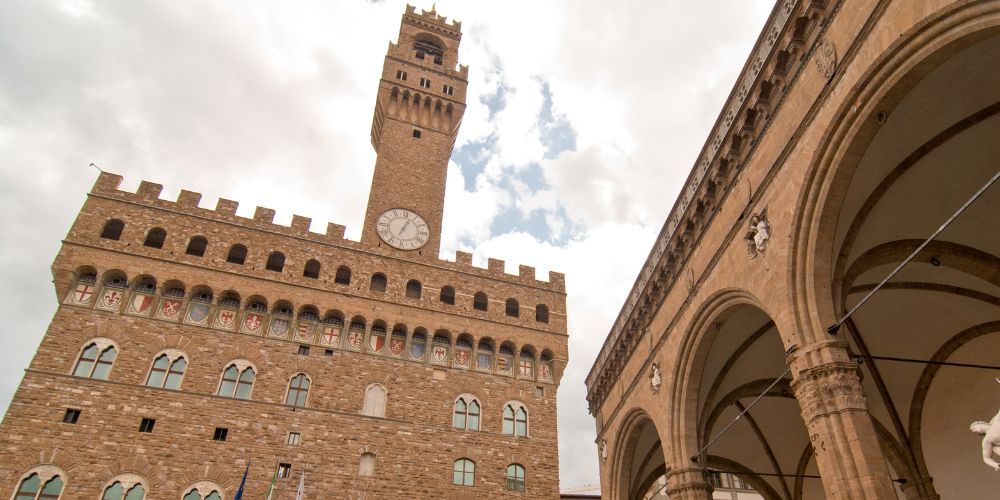
Piazza della Signoria is not only one of the most beautiful and visited places in Florence: it is an eternal symbol of the link between art, history and civic identity. Every stone, every statue, every building tells a fragment of the greatness of a city that has shaped European culture. Walking in this square means walking through centuries of political passions, artistic revolutions and social transformations.
Whether you visit it for the first time or for the hundredth, Piazza della Signoria always manages to surprise: with the light that changes the face of its statues, with the buzz of tourists mixed with the slow steps of the Florentines, with the discreet elegance of the Renaissance that coexists with contemporary vitality.
In a world in constant movement, Piazza della Signoria remains firm and powerful, guardian of memory and inspiration for the future. A place where the past is never truly past, but lives and breathes every day, under the proud gaze of David and under Arnolfo's tower that stands out, like a lighthouse, over the eternal soul of Florence.
About the author
Written on 20/05/2025



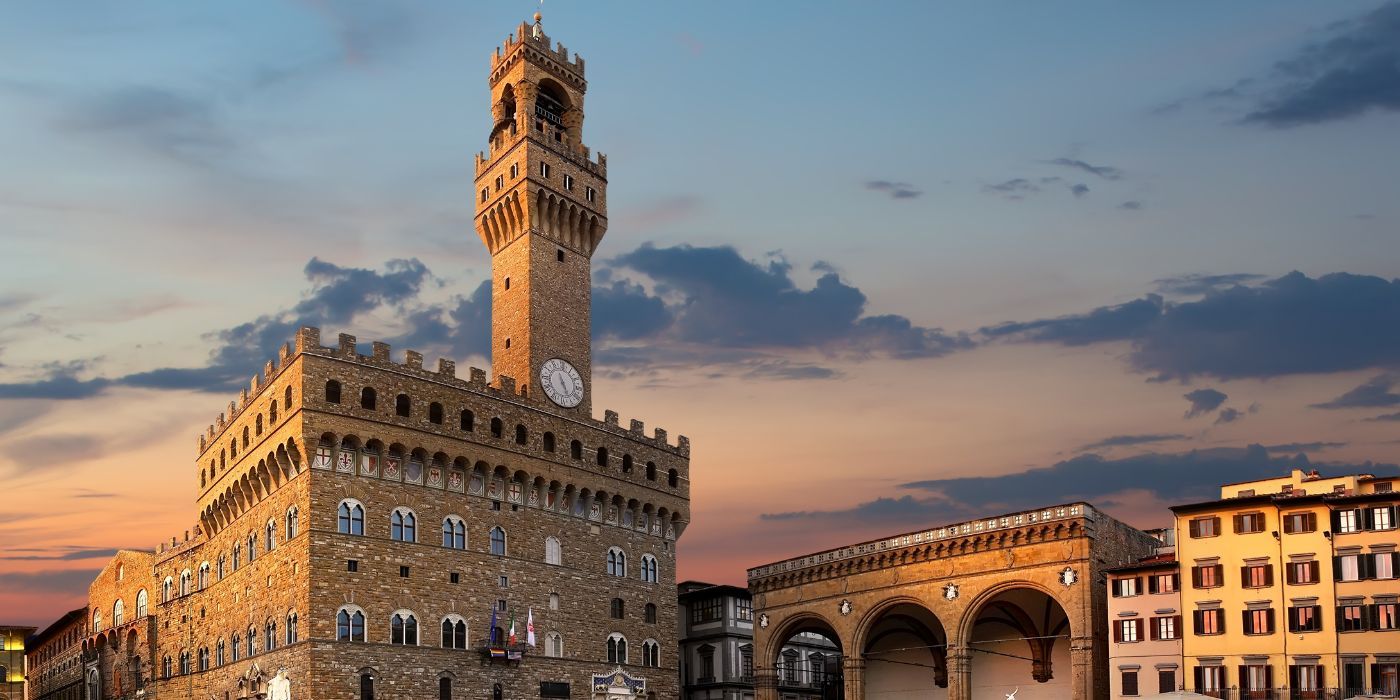

Maria Luisa Ancona
Piazza della Signoria is the heart of Florence, an open-air museum where art and power meet between the Palazzo Vecchio and sculptural masterpieces.